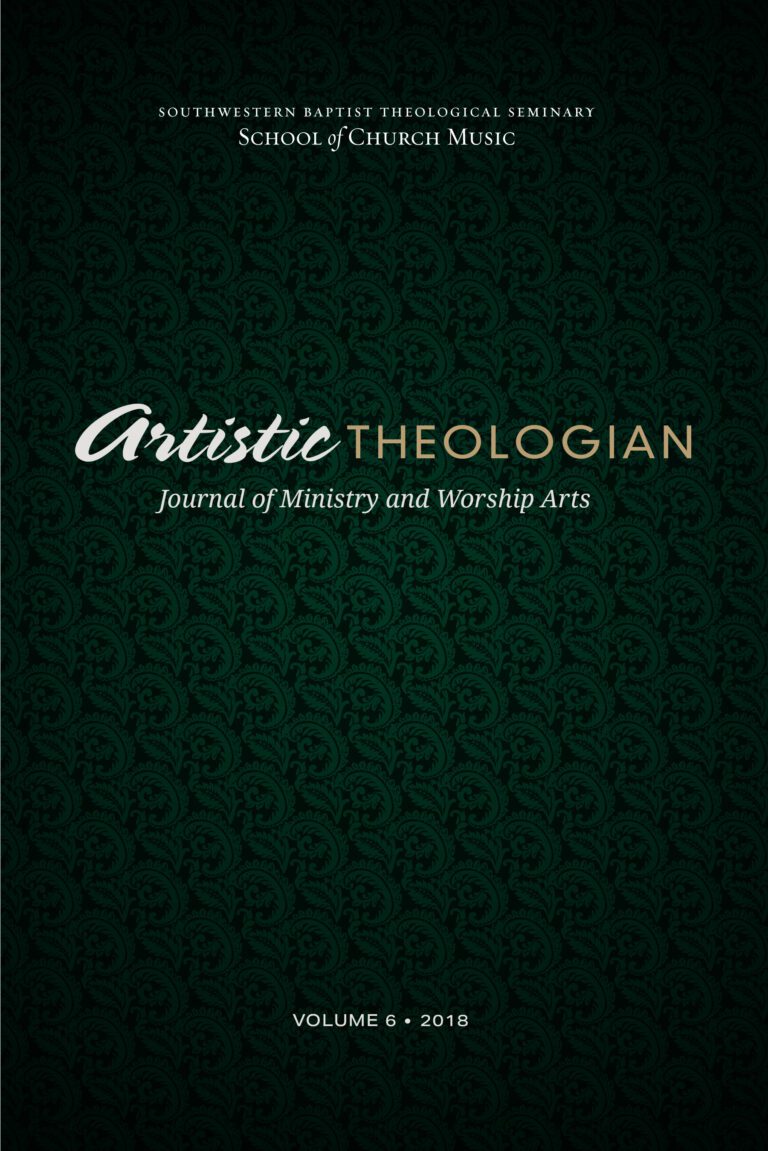
When We Come Together
Artistic Theologian
Volume 6, Summer 2018
Editor-in-Chief: Scott Aniol
The Face of the Deep: Exploring the Mysterious Person of the Holy Spirit, by Paul J. Pastor. Colorado Springs: David C. Cook, 2016. 303 pp. $16.99.
“It’s good that you are; how wonderful that you exist!” This imaginative sentiment of the Holy Spirit towards His beloved elect becomes the expression of Paul Pastor’s attempt to uncover the person, the nature, and the works of the Spirit. Pastor, a writer and grassroots pastor residing in Oregon’s Columbia River Gorge, uses his personal experience, observations, childhood stories, cultural and historical incidents (including biblical ones) to surface the underlying works of the Spirit. Instead of doctrinal and propositional discussions, he approaches the subject—exploring the mysterious person of the Holy Spirit—through stories, narratives, and reflections.
In this devotional-like writing, Pastor traces the mystery of the Holy Spirit through the symbolism of the Seven Stars and Seven Lampstands described in the Book of Revelation, with which he illustrates the Spirit’s work recorded in the Old and New Testaments respectively. Pastor interweaves the entire book with the title phrase The Face of the Deep to depict the moment when the Spirit was hovering and creating from the “Abyss of the deep water” (18) and frequently refers His wonderful acts back to this origin. He then surveys a list of biblical characters who were used by the Spirit to embody the works for His people. Through world events, cultural occurrences, natural phenomena, and his personal life experience, combined with biblical examples, Pastor is able to prove that the Spirit is working the same way here and now as He has done in the past.
By a spearhead he found in a canyon, Pastor is amazed how the re-creative power of the Spirit leaves marks in human creativity, friendship, etc. through arts, culture, and history, and also how those exemplify the beauty of sanctifying imperfections. Using the incident of Saul’s laying naked in front of Samuel (1 Samuel 19:1–24), Pastor believes that the Holy Spirit still communicates truth by prophesies, which are defined as God’s revealed truth against false powers (58). It is apt for Pastor to recall his experience of using a twenty-year-old burnt-down stump for his fireplace fuel and to exemplify the “stump of Jesse.” He illustrates how the Holy Spirit was the driving force behind the scene of bringing up King David—the ancestral lineage of our Messiah (102). Then, Pastor concludes the first half by quoting Joel 2 that the Holy Spirit chose Pentecost as the beginning of the apokalupsis and suggests that the Spirit “has done new things, who is even now doing new things” (140).
Proceeding to the New Testament discussion, Pastor recalls a wilderness-like place he discovered while navigating a gorgeous mountain area in Oregon, paralleling Jesus’s forty-day wilderness experience. He highlights that it is the love of the Spirit that likes to drive His people to experience nakedness, emptiness, and scarcity in order to observe God’s abundance in a different perspective, especially “when scarcity is in the foreground” (177). Pastor then interweaves the Babel accounts, Isaiah’s confession, and the Pentecostal tongues manifestation of Acts to bring out that the Spirit “upended” Babel but not “reversed” it. His view on tongues of the Pentecost is that not only was it a unified “speech” (not language) of the Gospel, but also the kindling of fire and lighting of desire for a yearning of salvific proclamation. Finally, Pastor tells the story of a Huguenot that represents countless examples of success and failure of standing firm on the truth. On the other hand, the unifying power of the Spirit should be shown by exercising a mutual humble learning among Christian communities.
In this book, Pastor successfully accentuates the roles of the Spirit as Lover, Initiator, and Communicator by capturing His intimacy towards the creation (especially humans). Without going into a mere sentimental, sensual, and experiential connection with the Spirit, as charismatics fail, the author draws readers into the personal and intimate relationship that the Spirit longs to establish in love with the beloved. Also, he wittily introduces some fresh approaches of how to look at prophecy and tongues without getting caught up in controversies.
However, there are three areas concerning the works of the Spirit that caught my attention, and I am dismayed that they may not go in the direction I would like to see. First, Pastor pays quite a lot of attention to caring for nature along with the re-creating and maintaining roles of the Spirit. Through the metaphors and imageries drawn from nature, he tends to emphasize human-nature harmony and hint at a strong ecology-environmental influence. Second, in the chapter The Renewer of Earth, he portrays the Spirit’s sustaining works as continuous strikes of musical notes in a symphony. This view of creatio ex nihilo, which suggests no room for human creation, is exactly a contradiction to his previous notion of human as creator. Third, Pastor’s displeasure over the continual divisions among Christendom over the centuries shows the failure of testifying to the Spirit’s unifying work. He suggests that “Protestants must look to Catholics for wisdom and guidance, and Catholics to Protestants” (262). Although the word “ecumenical” is not used, it certainly connotes the suggestion.
Although Pastor’s book does not include new theological discussions regarding the Holy Spirit, he certainly does an impressive and effective job demonstrating how Christians relate to God the Spirit intimately but not sentimentally, and lively but not superficially. The Face of the Deep is commendable and recommended to God’s people to put “living by the Spirit” into action.
Ian Hin-Kei Yeung
Southwestern Baptist Theological Seminary





